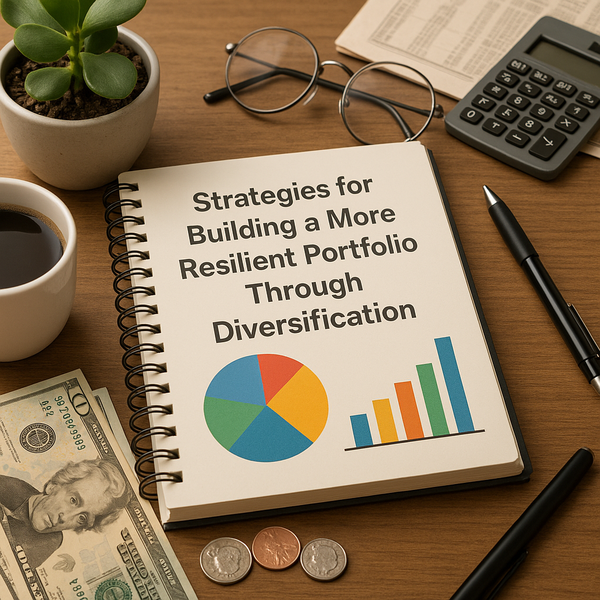
Diversifying your investment portfolio is a fundamental concept in finance, often cited as one of the most important strategies for managing risk. By spreading your investments across different asset classes, industries, and geographic regions, you can potentially reduce volatility and protect your capital from significant losses in any single market segment. Understanding how to effectively diversify is key to building a portfolio that can withstand market fluctuations and help you achieve your long-term financial goals.
The Core Principle of Diversification
At its heart, diversification is about not putting all your eggs in one basket. The idea is that different investments react differently to the same economic events. When one investment might be performing poorly, another might be doing well, or at least holding its value. This lack of perfect correlation among assets helps to smooth out the overall returns of your portfolio over time. A well-diversified portfolio aims to capture gains from various sources while mitigating the impact of downturns in specific areas.
Why Diversification Matters for Long-Term Investors
For investors focused on the long term, diversification is crucial. Market cycles are a reality, and predicting which asset class will outperform in any given year is incredibly difficult, if not impossible. Diversification ensures that you have exposure to potentially winning sectors or assets, regardless of short-term market trends. It helps protect against unforeseen events that could severely impact a single company, industry, or country. Think of the dot-com bubble, the 2008 financial crisis, or sector-specific disruptions; diversification helped investors weather these storms more effectively than concentrated portfolios.
Different Ways to Diversify Your Portfolio
Diversification isn't just about owning multiple stocks. It encompasses several dimensions:
Diversification by Asset Class
This is the most common form of diversification. It involves allocating investments across different types of assets that have varying risk and return characteristics. Key asset classes typically include:
- **Stocks (Equities):** Represent ownership in companies. Offer potential for high growth but also higher volatility. Can be further diversified by market capitalization (large-cap, mid-cap, small-cap) and style (growth, value).
- **Bonds (Fixed Income):** Represent loans to governments or corporations. Generally considered less risky than stocks, providing income through interest payments. Diversification within bonds involves considering credit quality (government, corporate, high-yield), maturity dates, and geography.
- **Real Estate:** Can include physical property or real estate investment trusts (REITs). Offers potential for income and appreciation, often with low correlation to stocks and bonds, though liquidity can be an issue.
- **Alternative Investments:** A broad category including commodities (gold, oil), private equity, hedge funds, and cryptocurrencies. These can offer diversification benefits but often come with higher complexity and risk.
Diversification by Geography
Investing only in your home country exposes you to country-specific economic and political risks. Diversifying internationally across developed and emerging markets can provide exposure to different growth drivers and reduce the impact of a downturn in any single nation's economy.
Diversification by Industry/Sector
Holding investments across various sectors like technology, healthcare, financials, energy, and consumer goods ensures that a downturn in one industry doesn't devastate your entire portfolio. Regulatory changes, technological shifts, or changes in consumer behavior can significantly impact specific sectors.
Diversification by Investment Style and Strategy
Within stocks, for instance, you can diversify between growth stocks (companies expected to grow rapidly) and value stocks (undervalued companies). You can also diversify across different investment strategies or fund managers if using mutual funds or ETFs.
Implementing Diversification Strategies
Building a diversified portfolio doesn't require you to pick hundreds of individual stocks and bonds yourself. Low-cost investment vehicles like Exchange-Traded Funds (ETFs) and mutual funds make diversification accessible. For example, you can invest in an ETF that tracks a broad stock market index (like the S&P 500), providing instant diversification across 500 large US companies. Similarly, bond ETFs, international stock ETFs, and sector-specific ETFs allow you to build a highly diversified portfolio with a relatively small number of holdings.
Common Pitfalls to Avoid
While diversification is straightforward in principle, pitfalls exist. Over-diversification can occur if you hold too many different investments, making the portfolio difficult to manage and potentially diluting returns without significantly reducing risk further. Holding multiple funds with overlapping investments can lead to 'diworsification,' where you think you are diversified but actually have concentrated exposure to certain assets. It's essential to understand what you own across all your accounts.
Measuring and Rebalancing Diversification
Diversification isn't a one-time task. As different assets perform differently, your portfolio's allocation will drift from its original targets. Periodically rebalancing your portfolio – selling assets that have grown to exceed their target allocation and buying assets that have fallen below their target – is crucial to maintaining your desired level of diversification and risk exposure.
Building a Resilient Financial Future
Diversifying your portfolio is a cornerstone of sound investment practice. It helps manage risk, reduce volatility, and provides a smoother investment journey towards your financial goals. By spreading investments across asset classes, geographies, and sectors, you build a portfolio designed to weather market storms and capture growth opportunities wherever they arise. Regularly reviewing and rebalancing your portfolio ensures it remains aligned with your diversification goals and risk tolerance.

